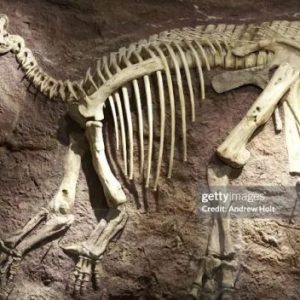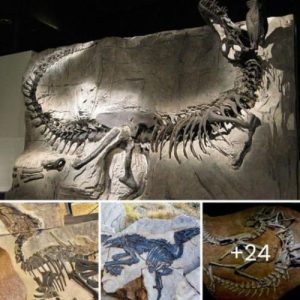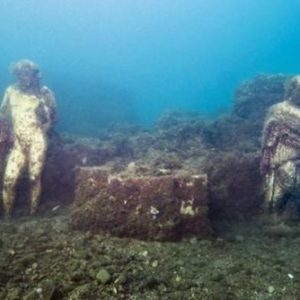
Portugal’s rich geological history continues to amaze and astound scientists as they unearth yet another prehistoric marvel that redefines our understanding of ancient life on Earth. In a remarkable discovery, a colossal 10-meter-long dinosaur with a crocodile-like head and a spiky tail has been brought to light, taking us back in time 130 million years ago.
This extraordinary find sheds light on the diversity and complexity of prehistoric ecosystems and further cements Portugal’s place as a treasure trove of paleontological wonders.
The Giant of Portugal
The enormous dinosaur, recently unearthed in Portugal, has been dubbed the “Giant of Portugal” due to its remarkable size and unique characteristics. Measuring approximately 10 meters in length, this colossal creature belonged to the Late Jurassic period, a time when giant reptiles roamed the Earth. Its most distinctive features are its crocodile-like head and a tail adorned with sharp, menacing spikes.
Uncovering the Fossil
The discovery of the “Giant of Portugal” is a testament to the dedication and expertise of paleontologists who tirelessly search for clues from the past. The excavation of this colossal dinosaur began when a group of scientists stumbled upon fossilized bones at a site in Portugal’s Lourinhã Formation. This formation has earned a reputation as a hotbed of dinosaur fossils and is known for its exceptional preservation of prehistoric creatures.

Understanding the Giant
Analyzing the fossilized remains, scientists have been able to piece together the physical characteristics of this ancient behemoth. The “Giant of Portugal” was a quadrupedal dinosaur, meaning it walked on all fours. Its crocodile-like head featured rows of sharp teeth, indicative of a carnivorous diet. The most striking feature, however, was its tail, adorned with a series of formidable spikes, possibly used for defense or communication within its species.
Paleoecology of the Late Jurassic
The discovery of the “Giant of Portugal” provides a unique window into the past, allowing scientists to reconstruct the ancient ecosystem of the Late Jurassic period. During this time, Europe was a cluster of islands and continents, and a diverse range of dinosaurs and other prehistoric creatures inhabited the region. The “Giant of Portugal” was one of the top predators in this ecosystem, contributing to the intricate web of life.
Significance of the Discovery
This remarkable discovery adds another layer to our understanding of prehistoric life, particularly during the Late Jurassic period. The “Giant of Portugal” serves as a reminder that our planet’s history is a tapestry woven with diverse and often bizarre creatures. It reinforces the idea that there are still countless mysteries hidden in the Earth’s depths, waiting to be unearthed by dedicated scientists.

Preservation and Research
Preservation of this colossal dinosaur is a top priority for scientists and paleontologists. In Portugal, dedicated efforts are underway to ensure that the “Giant of Portugal” is carefully conserved and studied. This meticulous work will allow for further research, potentially revealing more about its behavior, its interactions with other species, and the ancient environment it inhabited.

Portugal’s “Giant of Portugal” is a testament to the enduring curiosity and dedication of scientists who work tirelessly to uncover the mysteries of our planet’s past. This extraordinary find not only expands our knowledge of prehistoric life but also reminds us of the countless wonders that still lie beneath our feet, waiting to be discovered. As we delve deeper into the annals of Earth’s history, the “Giant of Portugal” is a true marvel, offering us a glimpse into a world that existed 130 million years ago.






